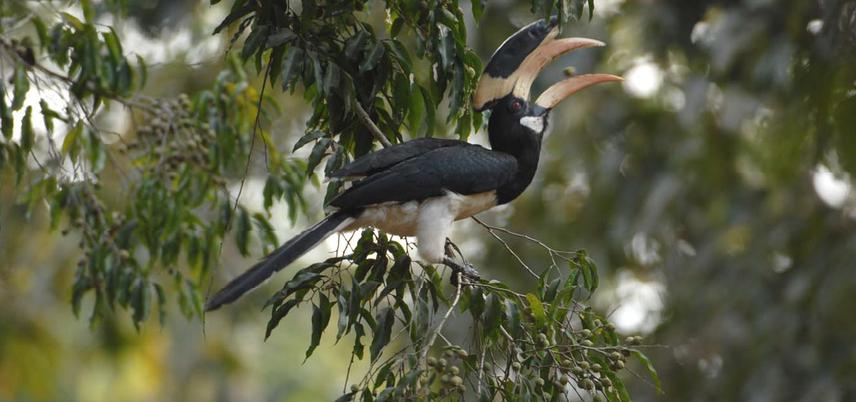Divya Mudappa
This project will assess conservation status and threats in these areas and estimate hornbill abundances using line transect surveys in select habitats and sites.

Hornbills are important flagships of the tropical Asian forests and their ecological importance as seed dispersers is well known. They are also magnificent birds with specialised nesting and feeding habits, threatened due to habitat loss, fragmentation, and hunting. This project will lead to the identification of important hornbill conservation areas along the Western Ghats and measures for long-term conservation within these areas. It will also identify areas of unprotected forests (Reserve and private forests) that have a high potential to be developed as hornbill conservation units, which may require special management or be upgraded to protected area status as a Wildlife Sanctuary or National Park. Understanding the basic biology and distribution of species are prerequisites for their effective conservation and management.
While many studies have addressed hornbill biology, there is little information on distributions, particularly in the face of large scale landscape transformations and continuing fragmentation in the Western Ghats. Therefore this survey aims to determine the distribution patterns of the four species of hornbills: Common Grey, Malabar Pied, Malabar Grey, and Great Hornbills in tropical dry and moist deciduous, and wet evergreen forests within protected Wildlife Sanctuaries and National Parks and unprotected Reserve Forests.
These results of this survey are likely to be of great conservation relevance for a wide suite of associated plant and animal species represented by these forest flagships. The study will also provide a firm baseline of hornbill distribution across the Western Ghats and abundance in select localities that are strongholds of each species for long-term monitoring programmes involving conservation scientists, amateur birdwatchers, and the Forest Department. In addition, the survey will also reveal ancillary information on distribution of threats along the Western Ghats and occurrence of other species of conservation interest such as endemic birds and arboreal mammals for which records will also be maintained during the work.